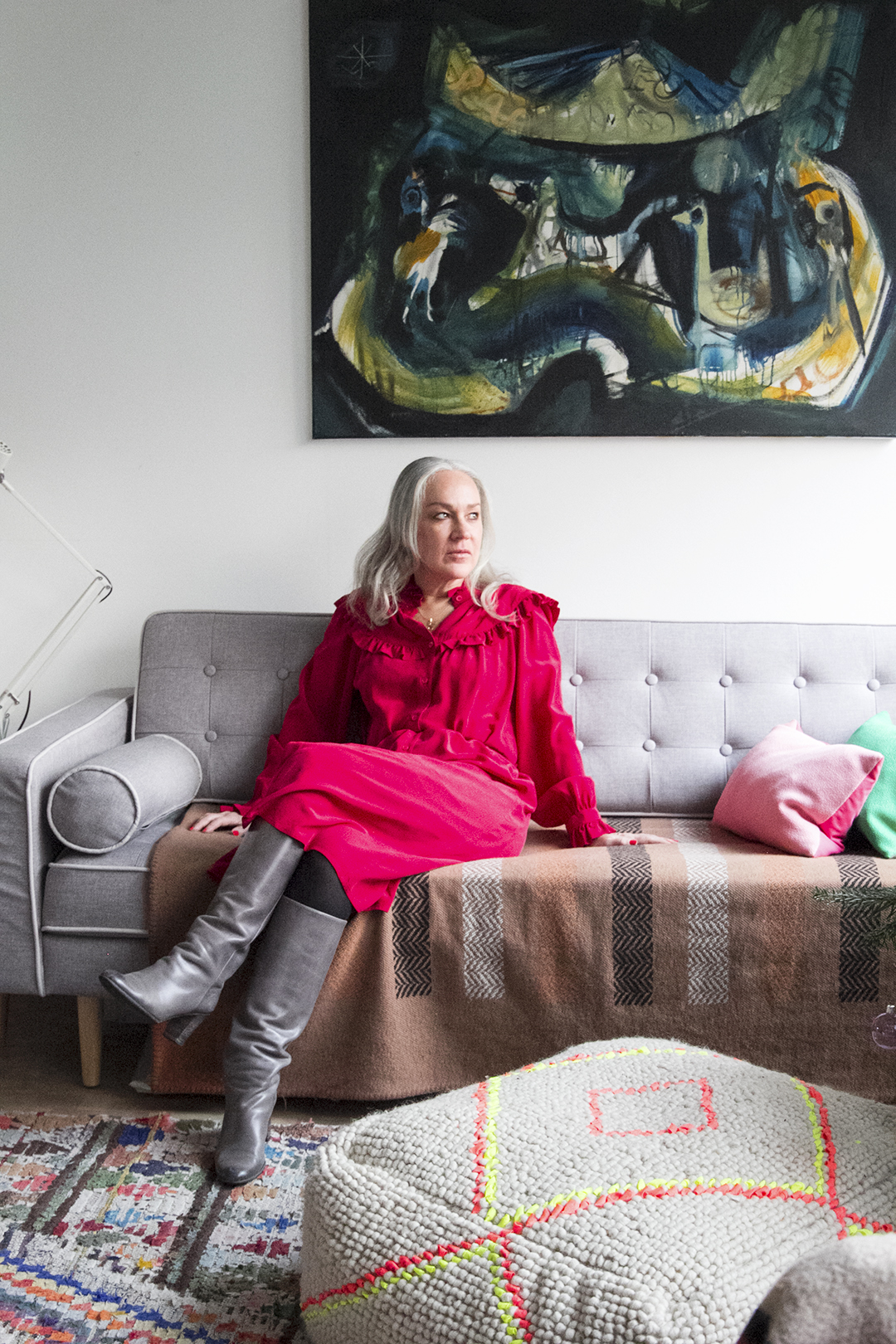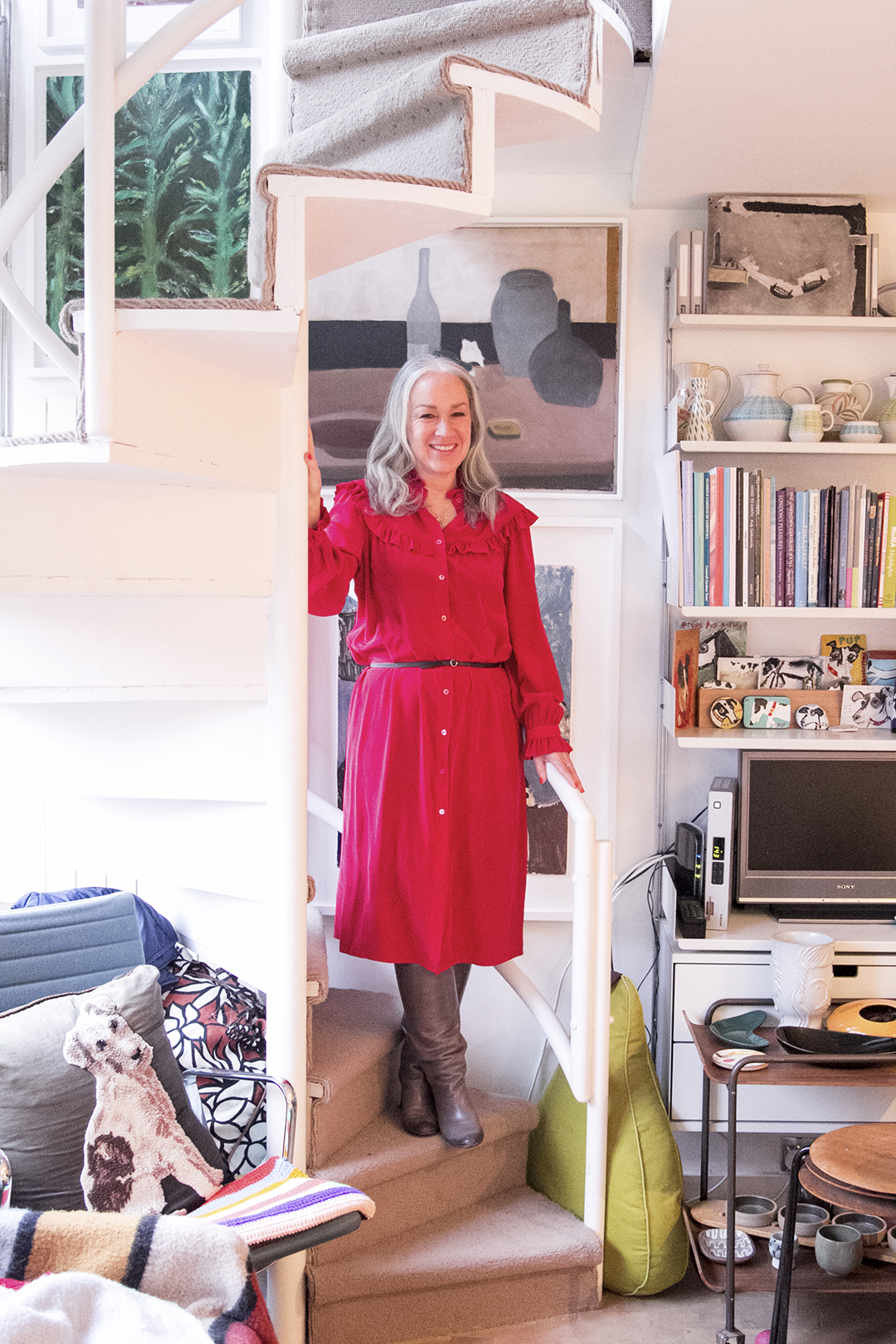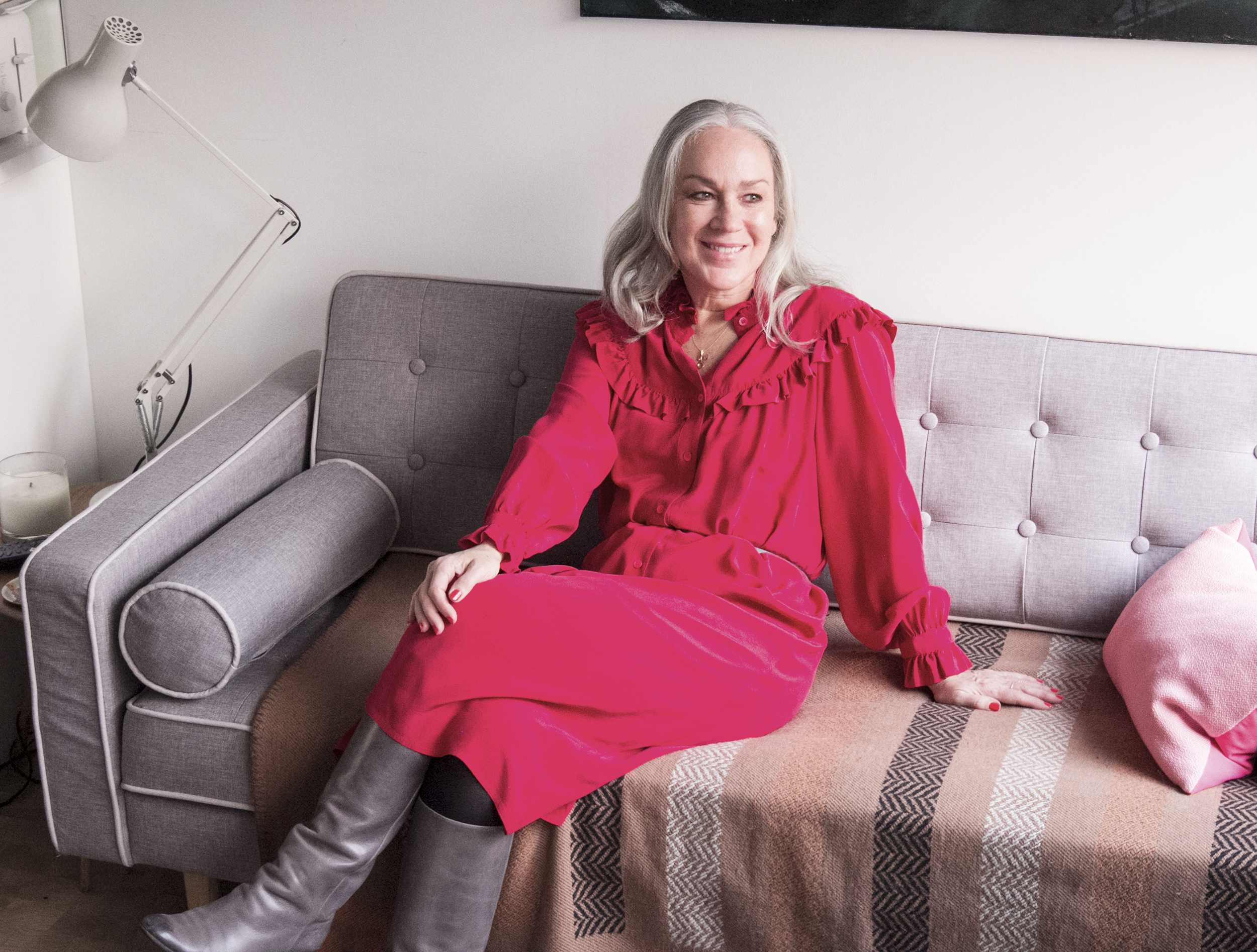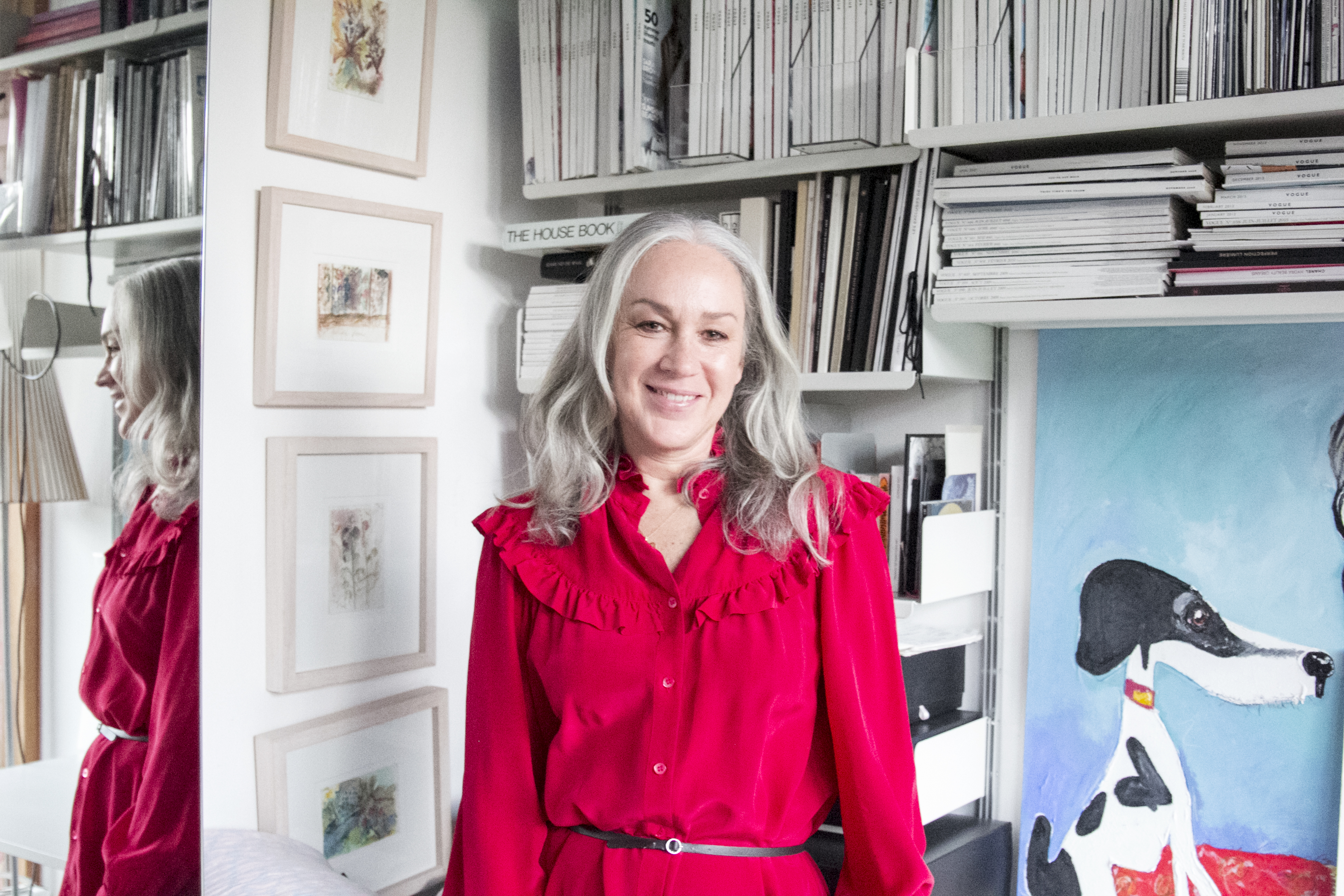By chance, Anna Marie Solowij was one of my last interviews of 2016. And as fate would have it, I couldn’t have planned for a better person to wrap up what had already been an incredible year of interesting conversations. Anna Marie is someone I’ve respected and admired from a far for years. An hour chat easily rolled into three.
For those unfamiliar with her backstory, she’s something of a veteran in the beauty world. She started her publishing career in the late 80s as part of the launch team of British Marie Claire under then-editor, Glenda Bailey. A stint at Elle magazine followed, and a few years at the helm of Harvey Nichols magazine before British Vogue called. She spent six years there as beauty and health director before going freelance (she writes for the likes of The Gentlewoman and The Financial Times, How to Spent It) and joining forces with Millie Kendall on the launch of their unique retail concept, BeautyMART.
This interview was purely selfish. Who better to talk to about the evolution of the editor – once controlled by the publications they serve, now influencers in their own right, their knowledge more lucrative than ever? I wanted to talk to her about the impact vloggers are having on the beauty industry and whether it’s been for the best and what she thinks is driving the movement away from the megabrands towards small, niche labels for millennials, by millennials. I was also interested to find out whether her approach to championing certain brands and products is different now as a retailer rather than an editor, considering that her bottom line relies on making the right call. We also got candid about some of her bold career moves, too. She halved her salary and doubled her hours to move to Marie Claire, and took a step back in seniority to join Elle in a bid to work under someone she could learn from. Here, she reveals all…
 HER UNCONVENTIONAL START & HOW SHE GOT INTO PUBLISHING: I did my A levels at college and felt I’d had my fill off student life. I wasn’t driven to any particular subject – I liked the idea of art and design but had no grounding in these, as my parents had pushed me to focus on academic subjects, so I decided that I’d go to work, instead of doing a degree. I’d had various jobs since I was 14 – paper rounds, Saturday jobs, and spent my 16th, 17th and 18th summers selling ice creams on the Cote d’Azur, then travelling around Europe. I loved the freedom of this; it exposed me to some interesting people and gave me a real taste of the world that was out there. Back then was a time of high unemployment and I thought that the sooner I got a job, the better so I started as a clerical officer in the Department of Health and Social Security and began the slow climb up the ranks. I transferred to London (from my home town, Derby) with the Civil Service after 3 years. By then, most of my friends had graduated and were moving to London for work. Being in London, I met lots of people who were working in fashion, as stylists and on magazines. This was a world I desperately wanted to be part of. I got lucky as my brother’s good friend from school landed the job as launch editor of British Marie Claire. She needed someone organised with a background in admin so I got the job of PA to the fashion and beauty directors and that was the start of my career.
HER UNCONVENTIONAL START & HOW SHE GOT INTO PUBLISHING: I did my A levels at college and felt I’d had my fill off student life. I wasn’t driven to any particular subject – I liked the idea of art and design but had no grounding in these, as my parents had pushed me to focus on academic subjects, so I decided that I’d go to work, instead of doing a degree. I’d had various jobs since I was 14 – paper rounds, Saturday jobs, and spent my 16th, 17th and 18th summers selling ice creams on the Cote d’Azur, then travelling around Europe. I loved the freedom of this; it exposed me to some interesting people and gave me a real taste of the world that was out there. Back then was a time of high unemployment and I thought that the sooner I got a job, the better so I started as a clerical officer in the Department of Health and Social Security and began the slow climb up the ranks. I transferred to London (from my home town, Derby) with the Civil Service after 3 years. By then, most of my friends had graduated and were moving to London for work. Being in London, I met lots of people who were working in fashion, as stylists and on magazines. This was a world I desperately wanted to be part of. I got lucky as my brother’s good friend from school landed the job as launch editor of British Marie Claire. She needed someone organised with a background in admin so I got the job of PA to the fashion and beauty directors and that was the start of my career.
ON SOME OF HER MOST PROMINTENT ROLES: I joined the team at ELLE before going freelance. My editor at the time was Nicola Jeal (currently the editor at The Times magazine) and she was leaving and I didn’t want to work with a different editor, as she had given me a lot of creative freedom. With a new editor, you have to change and fit in with how they want things and I felt as though I’d had the best of it at ELLE from 1990 – 96 and that it was time to let someone else have a go and do their thing. After some time being freelance, I joined the team at Harvey Nichols magazine as editor. It was a great to be able to ‘play’ at being a grown-up editor on a big magazine but without the pressure cooker environment and the scrutiny that comes with a consumer title. Customer magazines at that time were interesting as businesses were starting to realise the value of editorialising their offer to their customers so I had a lot of freedom. It didn’t feel like one big advertorial – I remember we worked with some brilliant editorial photographers such as Elaine Constantine and Steve Hiett, who are Vogue photographers, and writers like GQ editor Dylan Jones and Mark Holgate of American Vogue. The team at Harvey Nichols at that time were really keen to use the magazine as a creative outlet and I benefitted from that approach. I never thought I’d work at Vogue; ELLE had felt like my most creative time in magazines and I just didn’t think of myself as Vogue material. But they approached me and I said yes. Of course, I was immensely flattered to have been asked and I thought that it would be like finishing school for my CV – which it was. I stayed for six years and a lot of polishing took place…
THE UNSPOKEN CHALLENGES OF WORKING AT A MAGAZINE: I think the rules are very different now – in fact, I’d go as far as to say that there are no rules, but in my day, you weren’t permitted to have other clients. Your position as a magazine editor was sacrosanct – controlled and contracted. You weren’t allowed to use your knowledge for external profit as there was fear that your integrity as an editor would be compromised. I ended up giving away what I knew for nothing, despite that knowledge having huge commercial value. Editors are enormously influential – they have the ears and the eyes of their readerships and they are perfectly positioned to be tastemakers and drive sales. I’d got to a point where I was interested in the beauty industry itself, not just as a journalist, but as an influencer, and potentially someone who wanted to work on the ‘other side’. I wanted to be able to be part of that conversation, so I left.
ON WHAT INSPIRED SOME OF HER BOLD CAREER MOVES: Fear of boredom – I was bored every day in the Civil Service, and just had to get out and do something that interested me. When work accounts for such a large part of your life, it’s best spent doing something you like. Fear was also the driving factor in me taking a step back in seniority to go to ELLE. For 6 months, I lived in fear of doing something wrong: my editor had left and I was on my own, running the department with very little knowledge and my heart in my mouth every day. At that time, the magazine had a strong health focus, as well as busy beauty pages with lots of shoots, still lives, long features (2000 words on skincare!) and I felt it was only a matter of time before I’d make a huge mistake. I realised that I needed to work with someone above me who was more knowledgeable in order to keep learning.
 HOW THE IDEA FOR BEAUTYMART WAS BORN: It was crystallised by a conversation I’d had with Millie. She’d just moved back from the US after 7 years and she commented that nothing in London had moved on in that time, in terms of retail. She was right: Space NK was still the hot space to shop for beauty, despite being well established. And although department stores like Selfridges were shaking things up, it was still the same brands, the same rules and divisions – no mass brands in department stores, few premium brands in mass retailers and online was not an exciting place to shop for beauty, even though a post-recession customer was shopping high/low in terms or price and across brands and was starting to become influenced by bloggers. There were a few indie retailers – Lost in Beauty in Primrose Hill, Content Beauty in Marylebone, but these were very underground and niche. Our retail concept of editing down and only featuring the best – the most iconic classic or most exciting new product, across different price brackets – was how women were already shopping. It’s just that they were having to do it in so many different places: department stores, boutiques, chemists and online. We simply brought it all together under one roof. I don’t think shopping habits have changed that much and certainly the edited concept has been embraced by many other retailers now, but what has changed is that with the ability to research online, a more global marketplace has opened up. We are reflecting that in our offer as we know our customer is knowledgeable about, say, Korean beauty products, or some hippy brand from Australia, or some small batch skincare producer from Shoreditch.
HOW THE IDEA FOR BEAUTYMART WAS BORN: It was crystallised by a conversation I’d had with Millie. She’d just moved back from the US after 7 years and she commented that nothing in London had moved on in that time, in terms of retail. She was right: Space NK was still the hot space to shop for beauty, despite being well established. And although department stores like Selfridges were shaking things up, it was still the same brands, the same rules and divisions – no mass brands in department stores, few premium brands in mass retailers and online was not an exciting place to shop for beauty, even though a post-recession customer was shopping high/low in terms or price and across brands and was starting to become influenced by bloggers. There were a few indie retailers – Lost in Beauty in Primrose Hill, Content Beauty in Marylebone, but these were very underground and niche. Our retail concept of editing down and only featuring the best – the most iconic classic or most exciting new product, across different price brackets – was how women were already shopping. It’s just that they were having to do it in so many different places: department stores, boutiques, chemists and online. We simply brought it all together under one roof. I don’t think shopping habits have changed that much and certainly the edited concept has been embraced by many other retailers now, but what has changed is that with the ability to research online, a more global marketplace has opened up. We are reflecting that in our offer as we know our customer is knowledgeable about, say, Korean beauty products, or some hippy brand from Australia, or some small batch skincare producer from Shoreditch.
ON SUPPORTING EMERGING BRANDS: As underdogs ourselves, we like to champion the underdogs! It’s not that the brands we are offering are always new, it’s that they are often small, so don’t have money for PR and marketing, or they’re things we’ve found on our travels, or things we’ve always loved but which have been forgotten. We also love the big, established brands: before we launched, we spent a year seeing everyone and although they were supportive, not all of them – especially the big brands – could work the way we wanted to: cherry picking their range, ordering small and regular amounts, de-listing or re-listing products depending on trends.
THE CONSIDERATIONS SHE GOES THROUGH BEFORE TAKING ON A NEW BRAND: There are two factors – do we love it and will it sell? Because if it doesn’t sell (no matter how much we love it, we can’t afford to keep it on our shelves). For unknown brands, it’s hard and they must have a PR plan in place to help drive sales. For established brands, the PR must benefit us as well as other retailers.
ON HOW TO STAND OUT AT AS A BRAND TODAY: There’s a saying that to be heard you should whisper. I think that’s where we are now – there are so many brands with loud voices and it’s almost at the point where when they’re all shouting, none stand out. The brands that have managed to gain traction and presence are those that have broken the rules – e.g. Deciem – a totally sideways entry into the skincare sector; and Pat McGrath Labs – genius rule-breaking approach to online make-up retail. There is always room for those that behave and think differently. If you look at the companies that are doing well today, they are the ones that had a different idea at the time, e.g., Apple, Uber, Starbucks.
HOW SHE’S CAPITALISING ON HER KNOWLEDGE: We spent the first couple of years of our business enthusiastically giving a lot of help to a lot of emerging and established brands. Millie and I have a combined 50 year’s experience in the industry and have seen and learned a lot! We realised that we were giving our advice for free and decided to monetise our time and knowledge and be more serious about how we could use our experience to support and drive brands in the right direction. I guess what’s different about what we do is that we have a variety of experience – Millie’s been a retailer, a brand creator, a PR; I’m a journalist, now a retailer – and we’re accessible and non-corporate. We created a website for this business where clients could shop for what they need – design, retailer introductions, copywriting, creative concept work – a bit like a posh takeaway menu. I like to think that we’re less daunting than some of the larger agencies. Our clients came to us. Frequently they were asking to be stocked at BeautyMART and having taken a look at their ideas and products, for one reason or another, we pushed back but offered our help to move them in the right direction for success.
HER TAKE ON THE BIGGEST CHANGES IN THE BEAUTY BIZ: Women have always bonded over the subject of beauty – we all have knowledge to share and are keen to learn of the latest thing that just might make us feel and look better. We’re instinctive self-improvers – animals in the wild that groom themselves have a better chance of survival – they look healthy, strong, fit, making them a suitable mate – it’s primal. And humans are no different. In the time I’ve been in the industry, I’d say the shift has been the advent of expert voices: make-up artists, hairdressers, nail techs, dermatologists, brow gurus, etc. sharing their knowledge, giving us access to their world and selling products on the back of that – whether they are brand ambassadors or represent their own brands. The other big change in terms of conversations around beauty has been a result of the growth of online and smart phones, which brought about the advent of blogging and vlogging. There’s been a seismic shift in who women receive information from and now it’s no longer entirely magazines and experts, but other people who have a view or a different kind of expertise in beauty.


